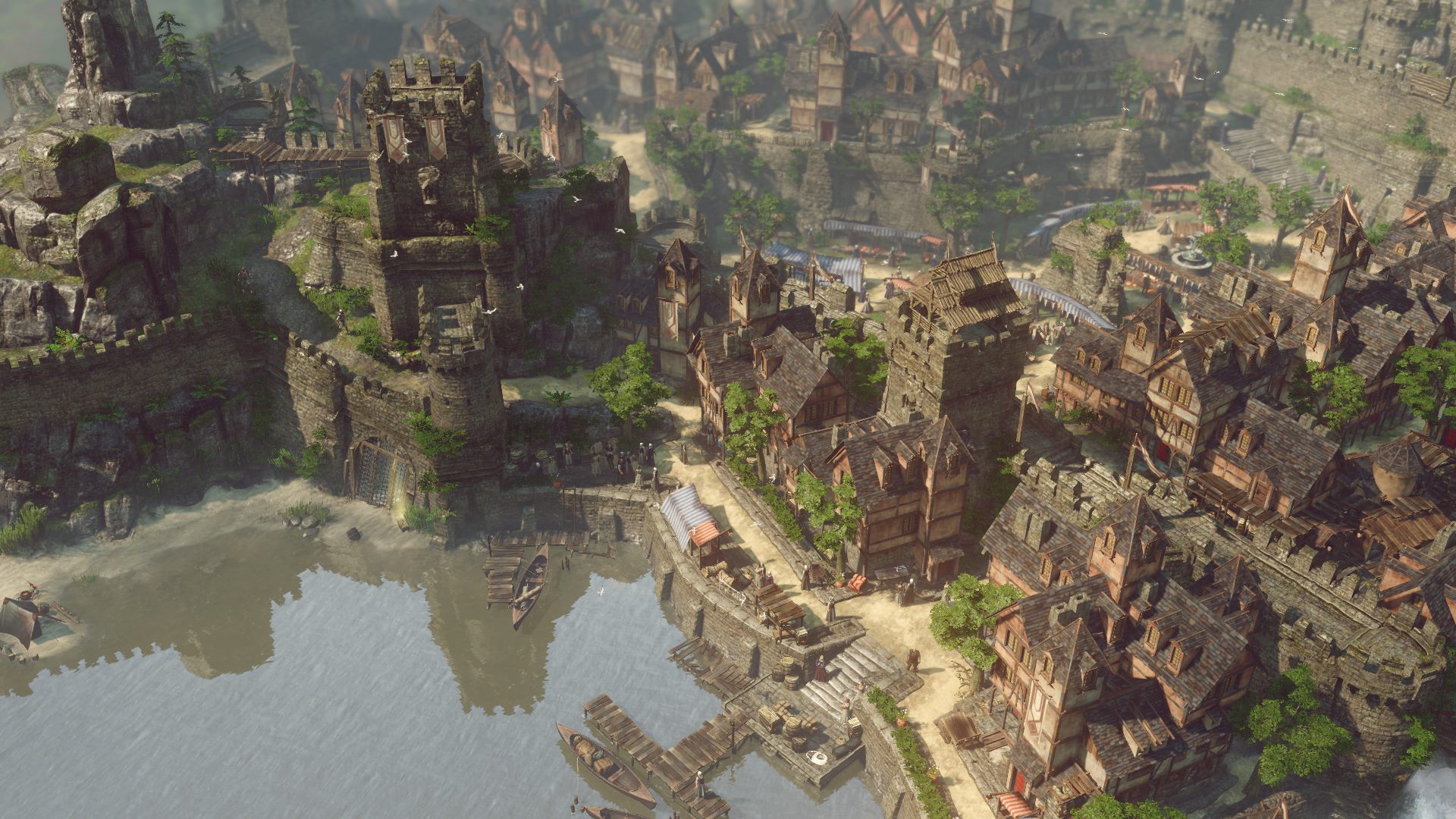It’s Time for Gamers to Give SpellForce a Chance
SpellForce III scratches both RPG and RTS itches without compromising anything from either genre.
LOS ANGELES – Every year at E3, I try to make some time to cover a game that I’m really excited about, even if it’s not a hotly anticipated, big-budget behemoth. This year, that game was SpellForce III: a hybrid role-playing game/real-time strategy from Grimlore: a small German studio. SpellForce is a niche series, but SpellForce III demonstrates that there’s no reason why it has to be. With creative gameplay and a long, elaborate story, SpellForce III scratches both RPG and RTS itches without compromising anything from either genre.

I got a private demo of SpellForce III at E3 2017, and while I wasn’t able to go hands-on with the game just yet, I did see about half an hour of live gameplay. Two developers walked me through the game’s role-playing elements (party management, character advancement, questing), as well as its real-time strategy aspects (building a base, controlling an army, expanding your territory). While SpellForce III wasn’t the most polished or ambitious game I saw at E3, it was one of the most confident in its core concept.
MORE: Best PC Games
SpellForce III is actually a prequel to the first two games, but you don’t need to know too much about the ongoing storyline before diving in. Basically, you’ll create a protagonist who’s both an adventurer and a military commander. Powerful magical forces are meddling where they don’t belong, and it’s to you, your companions and your soldiers to put things right. Of course, it’s not as simple as “good-versus-evil.” There are always shades of gray, since you’ll raise armies from humans, elves and orcs, all three of whom are often at cross-purposes.
As usual, you can create a protagonist to suit your play style. This time, you can choose any three skill trees, and advance them as you see fit. If you want to be a melee warrior who can also cast black and white magic, that’s fine; if you want to switch between archery, swords and magic at the drop of a hat, that’s also an option. Your party members will pick up the slack; you can choose three of them at any given time to accompany you on both quests and military missions. This is pretty standard RPG stuff: fight enemies with weapons and magic, keep your party healed, take down bosses, then get experience and equipment as a reward.
The game’s RTS elements are the more creative of the two. Instead of just building up a base and churning out an army, you’ll be waging a constant war with the enemy for territory and resources. Rather than gathering a resource or constructing buildings to increase your population limit, you’ll have to conquer contested points on the map. Each subsection of the map contains different resources, too, so simply walling up in the starting area isn’t an option. I was impressed that SpellForce III — for the first time in the series — seems to be innovating in the RTS space rather than sticking with something tried-and-true.
SpellForce has always been a fairly niche series, and the developers told me that they’re more interested in delivering a product for the franchise faithful rather than watering it down for mass appeal. Still, I think SpellForce III could have some widespread appeal, if people are willing to give it a chance. Both RPG and RTS players tend to be meticulous and patient, ready to invest a lot of time and energy in perfecting strategies and investing early on for big payoffs in the end. Aside from WarCraft III, it’s hard to think of big-name RTS series that have ever successfully incorporated RPG elements in a meaningful way. (Maybe StarCraft II: Heart of the Swarm. Maybe.)
Get instant access to breaking news, the hottest reviews, great deals and helpful tips.
Although I doubt many people went to E3 specifically to see SpellForce III, it’s good to know that smaller games still have an important presence at the world’s biggest gaming show. As someone who’s played through the first two SpellForce games and their myriad expansions, I think it’s high time for gamers to give this series a shot, especially if the third game turns out to be as solid as it looks so far.

Marshall Honorof was a senior editor for Tom's Guide, overseeing the site's coverage of gaming hardware and software. He comes from a science writing background, having studied paleomammalogy, biological anthropology, and the history of science and technology. After hours, you can find him practicing taekwondo or doing deep dives on classic sci-fi.
